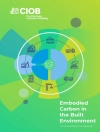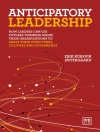‘This is a well-written book. Quite simple and precise . . . The authors should be commended. This book deals with leadership from a very contemporary perspective that reflects the importance of multiculturalism.’
–Guo-Ming Chen, University of Rhode Island
No matter how culturally different the person or group, there will be common-ground similarities and no matter how similar the person or group, there will be significant differences. Culture influences our thoughts, words, and actions in ways that are often unrecognized, leading to misunderstandings. Each misunderstanding can become very expensive, both in terms of missed opportunities and less effective business outcomes. Leadership in a Diverse and Multicultural Environment provides leaders with the tools necessary to effectively interact with all individuals.
Although much of the research related to multiculturalism has focused on expatriates and international assignments, Leadership in a Diverse and Multicultural Environment also focuses on leaders in domestic organizations, as they can benefit from developing their own multicultural awareness, knowledge, and skills. Effective leaders can shape the culture of their organization to be accepting of individuals from all races, ethnicities, religions, and genders with a minimum of misunderstandings.
Leadership in a Diverse and Multicultural Environment is well grounded in solid research, but written in an easy-to-comprehend style that:
- Provides a ‘culture centered’ leadership perspective allowing organizational leaders the opportunity to attend to the influence of culture
- Helps the reader find examples of how multicultural awareness can make their leadership task easier
- Promotes an organizational culture that is more satisfying to both individuals and their leaders by embracing and celebrating differences.
Leadership in a Diverse and Multicultural Environment is an ideal supplemental text for undergraduate- or graduate-level international management, leadership, or diversity-related courses taught in the business curriculum. It could also be used in leadership courses taught in education and communication departments.
Inhoudsopgave
Chapter 1: Making the Business Case for Increased Awareness, Knowledge, and Skills
Multiculturalism and Diversity
Multiculturalism is Inclusive and Broadly Defined
The Need for Multicultural Skills
International Perspectives on Managing Diversity
Value Added from Multiculturalism and Diversity
Why Focus on Leaders?
Conclusion
Critical Incident: Culture and Performance Feedback
Exercise 1: Coalitions and Trust Formation
Chapter 2: The Complexity of Culture
Cultural Similarities and Differences
A Test of Reasonable Opposites
One Size Does Not Fit All
The Multicultural Perspective Has An Up Side
Culture is Complex and not Simple
Culture Balance is Dynamic and not Static
The Dangers of Ignoring Culture
White Privilege is Real
Conclusion
Critical Incident: Is it White Privilege?
Exercise 2: A Test of Reasonable Opposites
Chapter 3: Cultural Frameworks and Their Importance for Leaders
Leaders and Culture
Seminal Work on Culture
Additional Important Research Related to Culture
GLOBE Research
Culture and Context
Developing Intercultural Sensitivity
Cognitive, Affective, and Behavioral Components
A Three-Stage Developmental Sequence
Conclusion
Critical Incident: Whose Holiday is it Anyway?
Exercise 3: Describing Cultural Identity
Chapter 4: Where Does One Start in the Journey for Multicultural Awareness, Knowledge, and Skills?
Ethnic Identity Models
Racial Identity Models
Implications of Identity Models for Leaders
Different Types of Intelligence
Kolb′s Learning Styles
Gagne′s Theory of Instruction
Conclusion
Critical Incident: A Celebration of Cultural Picnic
Exercise 4: Interpreting Policy on a Cultural Context
Chapter 5: The Development of Multicultural Competencies
Global Leadership Competencies
The Multidimensional Model for Developing Cultural Competence
Dimension 1: Race- and Culture-Specific Attributes of Competence
Dimension 2: Components of Cultural Competence
Dimension 3: The Foci of Cultural Competence
Conclusion
Critical Incident: I Had Them Right Where I Wanted Them…I Thought
Exercise 5: Double-Loop Thinking
Chapter 6: What Can We Do to Make Multicultural and Diversity Training More Effective?
Needs Assessment
Transfer of Training
The Evolution of Diversity Training
Problems with Diversity Training
Conclusion
Critical Incident: With the Best of Intentions
Exercise 6: A Self Assessment of Multicultural Awareness, Knowledge and Skill
Chapter 7: A Training Program to Lead from Multicultural Awareness to Knowledge and Skills
Establishing the Objectives for Multicultural Awareness, Knowledge, and Skills
Design Techniques
Training Approaches
Evaluation
Critical Incident: Flavor of the Month Diversity Training
Exercise 7: Predicting the Decisions of a Resource Person
Chapter 8: Constructive Conflict Management in a Cultural Context
A General Model for Handling Conflict
A Culture-Centered Perspective
Western and Non-Western Alternative Models
Conflict in an Asian-Pacific Context
Constructive Conflict Management in the 21st Century
Conclusion
Critical Incident: What Type of Conflict is This?
Exercise 8: The Cultural Grid
Chapter 9: Redesigning Leadership through Multiculturalism
Leadership Styles and Multiculturalism
Examining Mentoring through a Multicultural Lens
Ethical Dimensions of Multiculturalism
Culture′s Influence on Negotiation Styles
Conclusion
Critical Incident: Ethics Across Cultures
Exercise 9: Four Contrasting Ethical Orientations
Appendix: A Synthetic Culture Training Laboratory
Over de auteur
Paul B. Pedersen is a visiting professor in the Department of Psychology at the University of Hawaii and professor emeritus at Syracuse University. He has taught at the University of Minnesota, University of Alabama at Birmingham, and for six years at universities in Taiwan, Malaysia, and Indonesia. Pedersen was also on the summer school faculty at Harvard University, 1984-988 and the University of Pittsburgh “semester at sea” voyage around the world, spring 1992. International experience includes numerous consulting experiences in Asia, Australia, Africa, South America and Europe, and a Senior Fulbright award teaching at National Taiwan University 1999-2000. He has authored, co-authored or edited 40 books, 99 articles, and 72 chapters on aspects of multicultural counseling and international communication. Pedersen is a fellow in Divisions 9, 17, 45 and 52 of the American Psychological Association.












